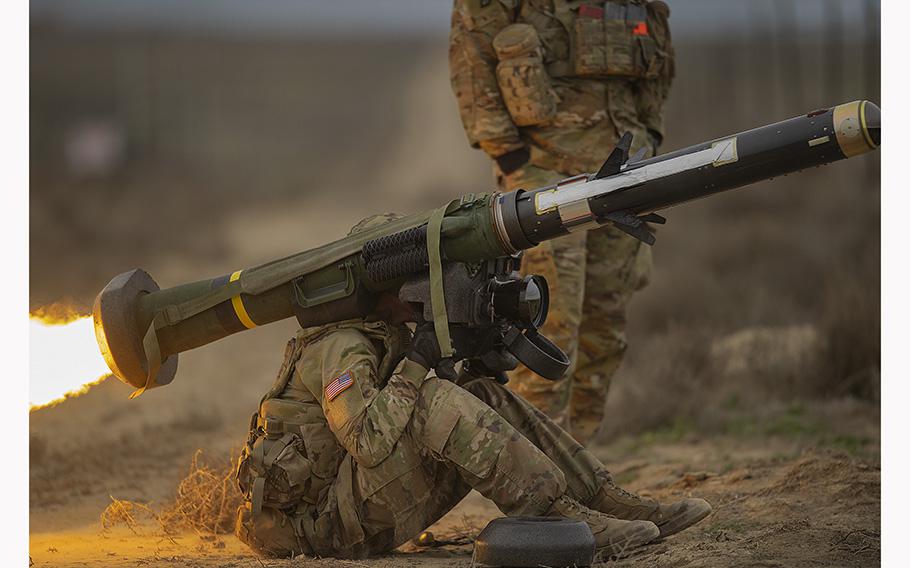
A U.S. soldier fires a Javelin anti-tank missile on the Orchard Combat Training Center ranges in Idaho on March 27, 2022. (Thomas Alvarez/U.S. Army)
(Tribune News Service) — A new $1 billion contract for Javelin anti-tank missiles — used to great effect by Ukraine against Russian tanks — will keep Raytheon's Tucson missile factory busy for years.
A joint venture of Tucson-based Raytheon Missiles & Defense and Lockheed Martin was awarded a four-year, $1.02 billion contract by the U.S. Army to produce Javelin anti-tank missile systems and related equipment, as part of a deal potentially worth up to $7.2 billion, the Army says.
The Pentagon did not say how many missiles are to be produced under the contract. Javelins cost about $200,000 and their launch units cost about $250,000 each, budget documents show.
The U.S. and its allies have sent some 7,000 Javelins to Ukraine to help fend off the Russian invasion since 2022, and the Pentagon has been ordering thousands to replenish U.S. stocks.
Last year, the Tucson-based Javelin Joint Venture was awarded Army contracts worth more than $300 million to produce Javelin missiles and launchers.
Much of the Javelin work is performed in Tucson, where Raytheon is the biggest private employer with about 13,000 workers. Lockheed performs its Javelin work in Orlando, Florida.
Army Assistant Secretary Doug Bush said the Army and its industry partners are striving to shorten the production lead time for production and delivery of Javelin systems.
"This contract award further illustrates the urgency the U.S. government is applying to the acquisition of systems and replenishing munitions stockpiles," Bush said in a statement announcing the latest contract.
First fielded in 1996, the FGM-148 Javelin is a "fire-and-forget missile" that locks on targets before launch and guides itself to target with an imaging infrared seeker, allowing operators to quickly move off after launching to avoid counterstrikes. It is man-portable and also can be mounted on a variety of combat vehicles.
Equipped with an imaging infrared seeker and tandem warhead, the missile can be configured in a top-attack flight arc to hit armored vehicles where they are most vulnerable, and it can also be used in a direct-line mode against buildings, fortifications and helicopters.
The Army plans to buy 541 Javelin missiles in fiscal year 2024 and more than 800 in fiscal 2025, then more than 500 annually through 2028, according to Pentagon budget documents.
The Marine Corps also fields Javelins, as well as the United Kingdom and more than 20 other allied nations.
Ukraine has used Javelins to destroy hundreds of enemy tanks and vehicles since Russia invaded Ukraine in February 2022, and its success led to a popular meme of "St. Javelin" fashioned after a religious icon.
Besides the Javelin, Raytheon produces several weapon systems that have been provided to Ukraine in its struggle against Russian, including Stinger portable air-defense missiles, TOW (Tube-Launched, Optically-tracked Wire-guided) anti-tank missiles and the National Advanced Surface-to-Air Missile System, which Raytheon makes with Norwegian partner Kongsberg Defence.
(c)2023 The Arizona Daily Star (Tucson, Ariz.)
Visit The Arizona Daily Star
Distributed by Tribune Content Agency, LLC.